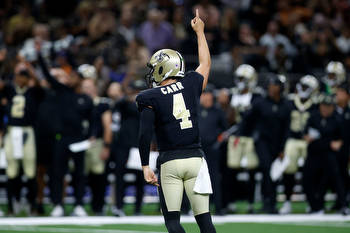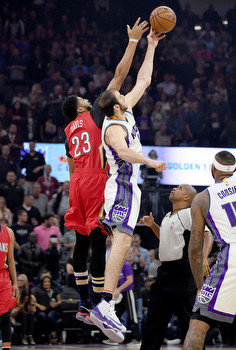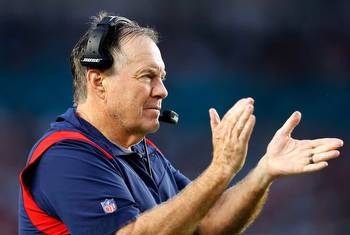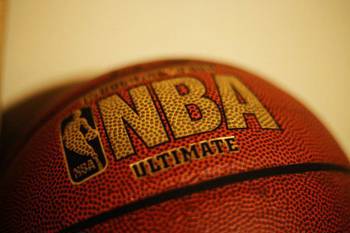How Do Bettors Love Football? Let Us Count the Ways

Billions of dollars will be wagered on the Super Bowl on Sunday, spotlighting the popularity of betting on football. A big part of the appeal is the scoring system, which was developed nearly 150 years ago by the “father of football,” Walter Camp, and is unique among the globally popular team sports.
Football allows scores of 2, 3, 6, 7 and 8 points, unlike sports like soccer and hockey, which allow only single points per score, and scores are low. In the 2022 World Cup, only 2.7 goals were scored on average by both teams in matches, and in the 2021-2022 NHL, the average was 6.2. At the other extreme, in the 2021-2022 NBA season, fans saw an average of 115 scoring events per game, for 1, 2 or 3 points each.
Now we get geeky. Rare events like soccer and hockey goals tend to follow a smooth curve called a Poisson distribution. Aggregations of many events tend to follow a different smooth curve called a Normal distribution. But football scores, with moderate numbers of different-sized scoring events, do not resolve to any smooth curve nor any standard distribution.
This means soccer, hockey and basketball games have a uniform feel. Teams play similarly — maybe a bit more or less aggressively — regardless of the score. The relative score moves up and down in uniform increments — a team cannot go from behind to ahead except in small steps, first matching, then passing the other team. It’s like watching a footrace.
Football, on the other hand, can move by leaps and bounds. There is enough scoring and enough different types of scoring that teams can make up deficits and produce final scores in myriad ways. Like soccer and hockey, but unlike basketball, a single event makes a material difference to the outcome. But like basketball and unlike soccer and hockey, there are lots of those events during an average game. Teams play radically differently depending on the score — passing versus running; field goals and punts versus fourth-down attempts; one-point conversions versus two-point ones. Moreover, there are many in-game situations — possession, yard line, down, distance — affected by every play; most of the other sports mostly have possession, which has only two values and changes constantly. These things make for spectator excitement and lots of good gambling opportunities.
Another way to look at it is the variety of final scores. In the 2022 World Cup, 64 games resulted in only 15 different final scores, and 70% of those games were 0-0, 1-0, 1-1, 2-0 or 2-1. In the 2022 NFL regular season, 272 games produced 181 different outcomes. The most common NFL score, 20-17, happened only eight times in those 272 games, while three World Cup scores happened more often in only 64 games (2-0 12 times, 2-1 11 times and 1-0 10 times). The NBA has plenty of different outcomes, 749 in 1,264 games in the 2021-22 season, but a 115-109 game is not much different from a fan or gambler perspective than a 116-110 game.
Scoragami tracks NFL results that occur for the first time. Over 17,389 games, there have been 1,075 different ones. There have been three to nine never-seen-before outcomes in each of the last 10 years and at least one every year since 1983. The only time there is a new result in soccer or hockey is when one team sets a new high total, and a 20-0 game is pretty similar to a 19-0 one.
Baseball is an interesting middle case. Although scoring happens in individual runs, the nature of the game is that runs come in bunches. Like football, there are many intermediate game parameters — team at bat, inning, men on base, outs, balls and strikes. While there is great international interest in baseball in Latin America, Japan, Iraq and Canada, it remains primarily a US sport, popular mostly with American fans and bettors.
Like any sport, football produces lopsided games, which aren’t much fun for spectators or bettors. Enter University of Chicago mathematician Charles McNeil. A high-school player too small for college ball at 138 pounds, he nevertheless formed a lifelong friendship with legendary coach Alonzo Stagg. He invented the point spread around 1940, and it transformed football and later basketball betting. Point spreads are too coarse for soccer, hockey, baseball and other sports, which are forced to rely on odds betting — more confusing for bettors and harder to manage for bookies.
Football has not gained the worldwide popularity of US exports like basketball or even volleyball and baseball, but it is the favorite spectator and betting sport in the US by far, and the myriad scoring outcomes go a long way in explaining why.
• Gambling Apps Are Supercharging Sports Match-Fixing: Tim O’Brien
• Gambling’s Global Coming-Out Party in Qatar: Lionel Laurent
• What Fantasy Football Can Teach Money Managers: Marc Rubinstein
This column does not necessarily reflect the opinion of the editorial board or Bloomberg LP and its owners.
Aaron Brown is a former managing director and head of financial market research at AQR Capital Management. He is author of “The Poker Face of Wall Street.” He may have a stake in the areas he writes about.
Richard Dewey is the co-founder and chief executive officer of Proven.


































